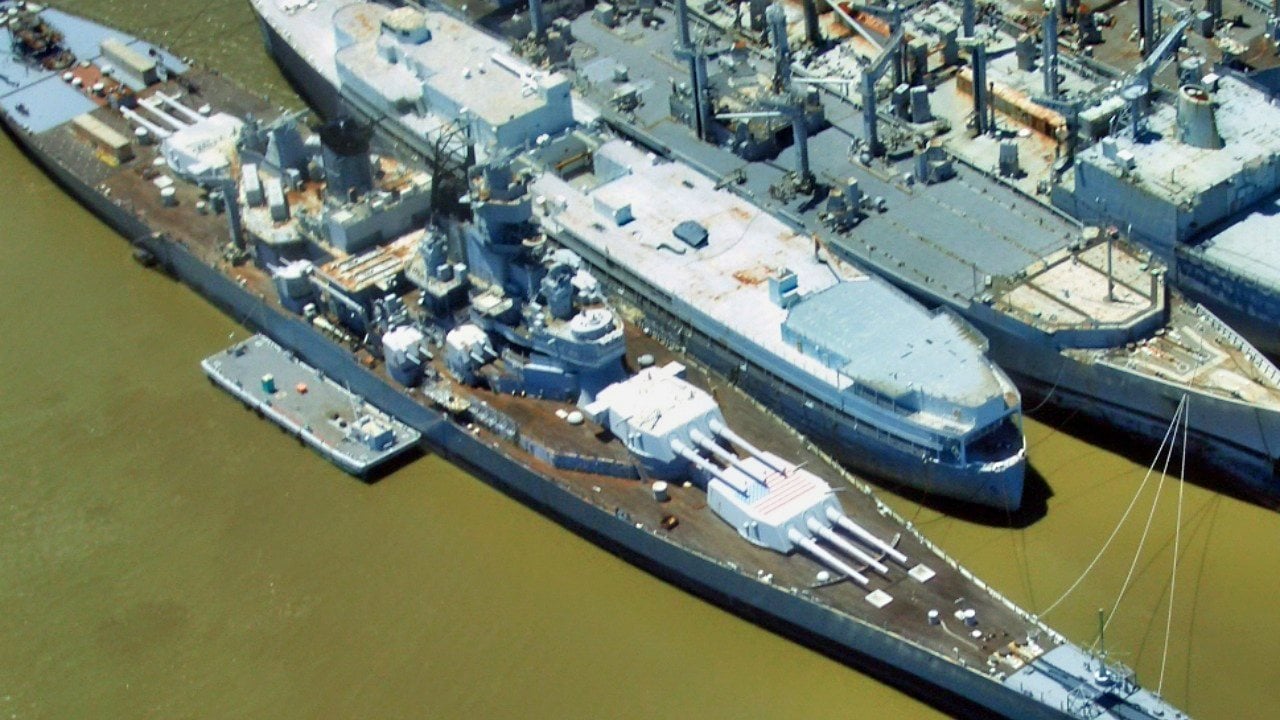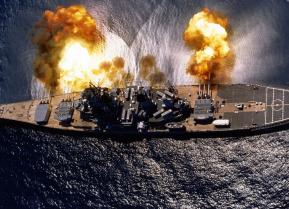The Iowa-Class Battleships Made the Ultimate Comeback Against North Korea
The Iowa-class battleships certainly brought their big guns to Korea. In the 1980s, these legendary warships - some say the best battleships ever - would be revived for a second time.
Summary: The article discusses the reactivation and deployment of Iowa-class battleships during the Korean War. Following their initial decommissioning after World War II, the USS Missouri was the only Iowa-class battleship remaining in active duty. However, during the Korean War, the USS Wisconsin, Iowa, and New Jersey were reactivated and played significant roles in naval operations off the coast of Korea. The battleships conducted bombardments on various targets, contributing to the overall destruction of Korean assets. The article also highlights the modifications made to the Iowa-class battleships during their second comeback in the 1980s, including installing newer weaponry such as anti-ship missiles and cruise missiles. Despite no longer being in service, the Iowa-class battleships are esteemed by military enthusiasts and industry experts.
The Iowa-Class: Down But Not Out
The Second World War officially ended after the U.S. dropped the atomic bomb on Hiroshima and Nagasaki in 1945. Within five years, almost 90% of the U.S. Navy’s personnel were discharged to civilian life as its active duty personnel had shrunk to 375,000. In addition to those relegated to reserve duty, the majority of the Navy’s battleships were decommissioned or scrapped for parts. However, three completed Iowa-class battleships would soon jump back into service and join their sister ship the USS Missouri off the coast of Korea. For the next three years, these formidable warships would lead the Navy’s operations against North Korean and Chinese forces.
Introducing the Iowa-class battleships
The Iowa-class ships can be traced back to the late 1930’s, when the “escalator clause” first emerged. First penned in the 1936 London Treat, if Japan (or other non-signatories) refused to confirm that future battleships would not be armed with guns over 14-inch calibers, “then the signatories could adopt 16-inch guns and also a larger size limit for ships.” For this reason, the World War II battleships were constructed with 16-inch guns, and the Iowa-class vessels were designed to weigh 45,000 tons, rather than the previous 35,000 ton limit. These battleships were powered by eight Babcock & Wilcox boilers and four sets of double-reduction cross-compound geared turbines. During the Second World War, the earliest search radars installed onto the Iowa ships were the SK air-search radar and SG surface-search radar.
Each Iowa-class battleship measures 860 feet with a maximum beam length of 108 feet. In terms of armament, each vessel packed a punch. Nine 16-inch Mark 7 naval guns were fitted on the ships, which could fire explosive and armor-piercing shells. The “three-gun” turrets on each ship could fire any combination of its guns, including a broadside of all nine. The Mark 38 Gun Fire Control System was installed for fire control, in addition to large-caliber guns.
Notably, the Mk 8 “Super-heavy” Armor Piercing Capped (APC) shell for anti-structure and anti-ship work was incorporated on the Iowa-class ships for use against unarmored targets.
The USS Missouri and sister ships take on North Korea
After World War II, the USS Missouri was the only Iowa-class battleship to remain on active duty. She was notably the last American battleship commissioned. In 1950, the Missouri was displaced off the coast of Korea. Shortly after her arrival, the USS Wisconsin was reactivated for support.
The U.S. Navy opted not to transfer the three heavy cruisers of the Des Moines class already in service in the Atlantic and the Mediterranean since they served as important deterrents to the Soviet Union at the time. When the Wisconsin (followed by the reactivation of sister-ships Iowa and New Jersey) re-entered service during the Korean War, they were all in excellent condition. In fact, the only real change involving these battleships was the replacement of WWII-era floatplanes with helicopters.
By 1952, the USS Iowa was serving as flagship for the Commander, Seventh Fleet. It took part in gun strikes on targets around the areas of Songjin, Wonsan, Hungman, Kojo, Toejo, Chaho, and northern Inchon, North Korea. USS New Jersey also operated mightily during the war, taking part in coast raiding of North Korean transportation facilities along the border. The USS Missouri also engaged in numerous bombardments while serving in Korea. The battleship carried out her first attack in 1951 and began a second tour two years later.
While the four Iowa-class battleships certainly did a number on Korean assets via bombardments in the early 1950s, the overall impact of their presence is up for debate. As detailed by Robert Farley here in the National Interest, “Communist forces quickly learned to move critical facilities and troop concentration outside of the range of the battleships’ guns, although the transport network was hard to shift inland.
Heavy U.S. bombing of targets across Korea contributed to the general destruction, making it hard to parse out how much the battleships themselves mattered. The smaller, cheaper heavy cruisers could often deliver similar levels of destruction to enemy targets. Still, the very presence of the battleships may have had some degree of psychological effect on Communist and UN forces alike.”

The Iowa-class ships certainly brought their big guns to Korea. In the 1980s, these battleships would be revived for a second time. Since these vessels are quite large in size, modifications could be more easily incorporated. During the Iowa class’ second comeback phase, workers replaced the older 5-in gun mounts installed onboard with newer and bigger weaponry. In addition to sixteen Harpoon anti-ship missiles, thirty-two Tomahawk cruise missiles were also installed on the battleships.
Although the Iowa-class vessels are no longer in service, these battleships are well regarded by military buffs and industry officials alike.
About the Author: Maya Carlin
Maya Carlin, National Security Writer with The National Interest, is an analyst with the Center for Security Policy and a former Anna Sobol Levy Fellow at IDC Herzliya in Israel. She has by-lines in many publications, including The National Interest, Jerusalem Post, and Times of Israel. You can follow her on Twitter: @MayaCarlin. Email the Author: [email protected].


